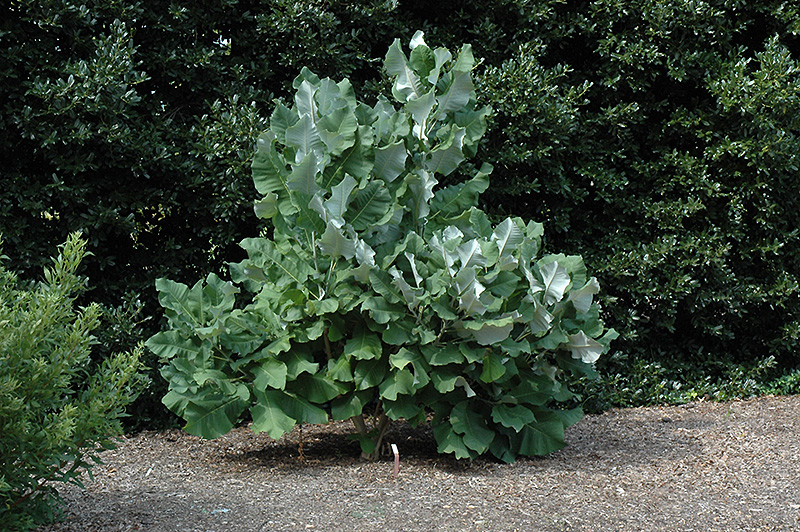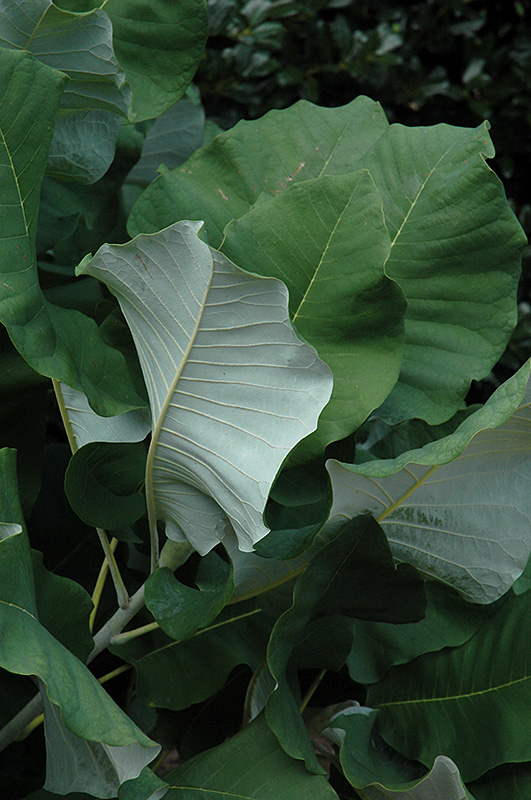Height: 50 feet
Spread: 40 feet
Sunlight:
![]()
![]()
Hardiness Zone: 5b
Other Names: Large-leaved Cucumber Tree
Description:
This extraordinary variety produces huge oval leaves with silvery undersides; large ivory flowers in mid spring persist until early summer; great as a specimen or shade tree in a large area; may take many years to produce flowers
Ornamental Features
Bigleaf Magnolia features showy fragrant white cup-shaped flowers held atop the branches from mid spring to early summer. It has dark green foliage with silver undersides. The enormous oval leaves do not develop any appreciable fall color. The fruits are showy red pods displayed in mid summer. The furrowed gray bark and silver branches add an interesting dimension to the landscape.
Landscape Attributes
Bigleaf Magnolia is a multi-stemmed deciduous tree with an upright spreading habit of growth. Its strikingly bold and coarse texture can be very effective in a balanced landscape composition.
This is a relatively low maintenance tree, and is best pruned in late winter once the threat of extreme cold has passed. Deer don't particularly care for this plant and will usually leave it alone in favor of tastier treats. It has no significant negative characteristics.
Bigleaf Magnolia is recommended for the following landscape applications;
- Accent
- Shade
Planting & Growing
Bigleaf Magnolia will grow to be about 50 feet tall at maturity, with a spread of 40 feet. It has a low canopy with a typical clearance of 4 feet from the ground, and should not be planted underneath power lines. It grows at a medium rate, and under ideal conditions can be expected to live for 80 years or more.
This tree does best in full sun to partial shade. It requires an evenly moist well-drained soil for optimal growth, but will die in standing water. It is not particular as to soil type, but has a definite preference for acidic soils. It is somewhat tolerant of urban pollution, and will benefit from being planted in a relatively sheltered location. Consider applying a thick mulch around the root zone in winter to protect it in exposed locations or colder microclimates. This species is native to parts of North America.


